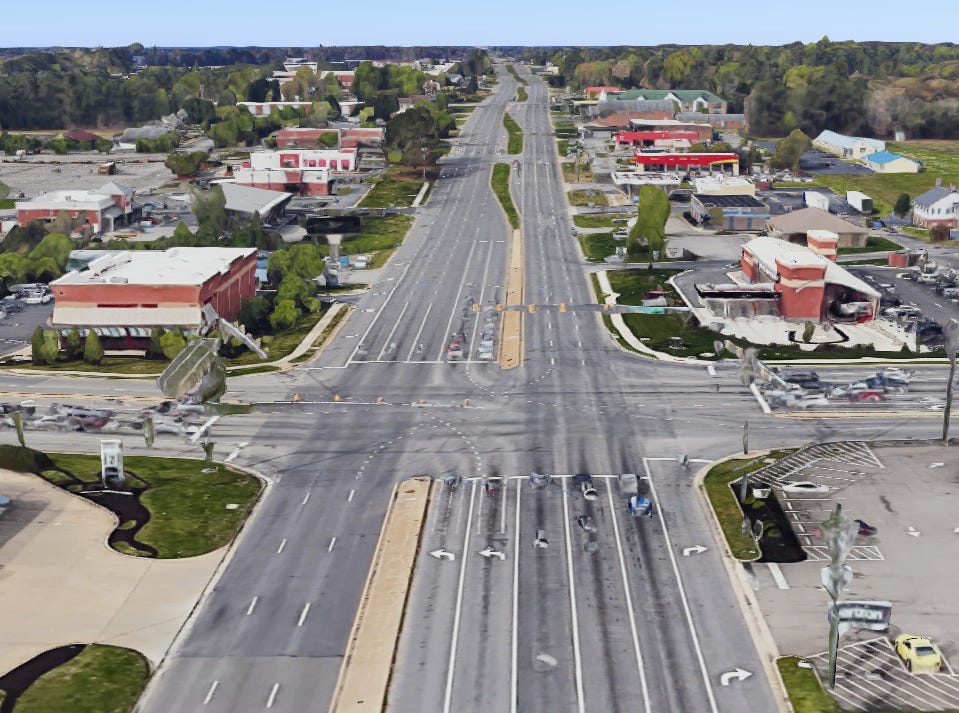Land use policy is sabotaging public health
If it’s hard to walk in a neighborhood, don’t be surprised when its residents struggle to stay healthy.
According to public health experts, as much as 80 to 90 percent of a person’s long-term health is shaped not by genetics or medical care, but by their environment—where they live, how they get around, how much access they have to parks, fresh food, and human connection.
And yet when headlines announce a new childhood obesity study, the solutions offered are so often medication and surgery. The physical environment is invisible. Corporate America has successfully medicalized a problem that was designed into our surroundings.
Obese adults rack up roughly double the medical expenses of those at normal weight. That includes chronic conditions like type 2 diabetes, heart disease, depression, and stroke. And while pharmaceutical companies push injections and insurers debate coverage, we continue ignoring the upstream design choices that helped create the crisis.
Zoning codes, parking mandates, minimum lot sizes, setback requirements—so many alleged “greater good” regulations make healthy daily activity a chore. Walking and riding bikes is nearly impossible when everything is spread out across creation. Local rules systematically separate homes from shops, schools from parks, and jobs from groceries. The result is that millions of Americans drive to a building so they can walk on fake stairs.
Diet, sleep, stress, genetics, and access to care all play roles in obesity and long-term health outcomes. But the places where we live, work, and move and all the supporting infrastructure act as the scaffolding around those choices. Our surroundings shape what's convenient, what’s affordable, and what feels normal.
The CDC says physical activity isn’t just for summer bods:
“People who are physically active live longer and have a lower risk for heart disease, stroke, type 2 diabetes, depression, and some cancers.”
The way we build cities makes physical activity a luxury good.
More than 80 million Americans are classified as physically inactive. That’s not because we suddenly became lazy. It’s because, in most neighborhoods, movement is illegal unless it happens inside a car.
Over the past 75 years, federal, state, and local governments have subsidized sprawling development patterns that put everything out of walking range. Meanwhile, they outlawed traditional neighborhood designs like corner stores, duplexes, townhouses over bakeries, etc. that naturally supported daily movement.
All of this comes at a cost. Obesity-related health problems cost our economy hundreds of billions of dollars each year. One estimate from George Washington University pegged the 1986 costs of obesity-related conditions at $39 billion. Since then, those costs have ballooned, tracking closely with the expansion of car-dependent suburban infrastructure.
And that's just direct medical costs. When you zoom out, the financial toll of unhealthy infrastructure is staggering:
Public agencies spend trillions to build and maintain roads that isolate people.
Families spend tens of thousands per year on transportation, often more than on food.
Disconnected street networks reduce job access and increase time spent in traffic.
Isolation and inactivity contribute to mental health crises, which carry their own heavy price.
Reforming land use policy won't cure obesity overnight, but it can reintroduce the possibility of living a healthy life without needing a prescription for it. The built environment is not neutral. It either promotes health or suppresses it. Health is not just a matter of individual willpower. It’s a matter of public design.
Let’s stop asking why Americans aren’t exercising enough and start asking why we designed healthy choices to be so difficult.





